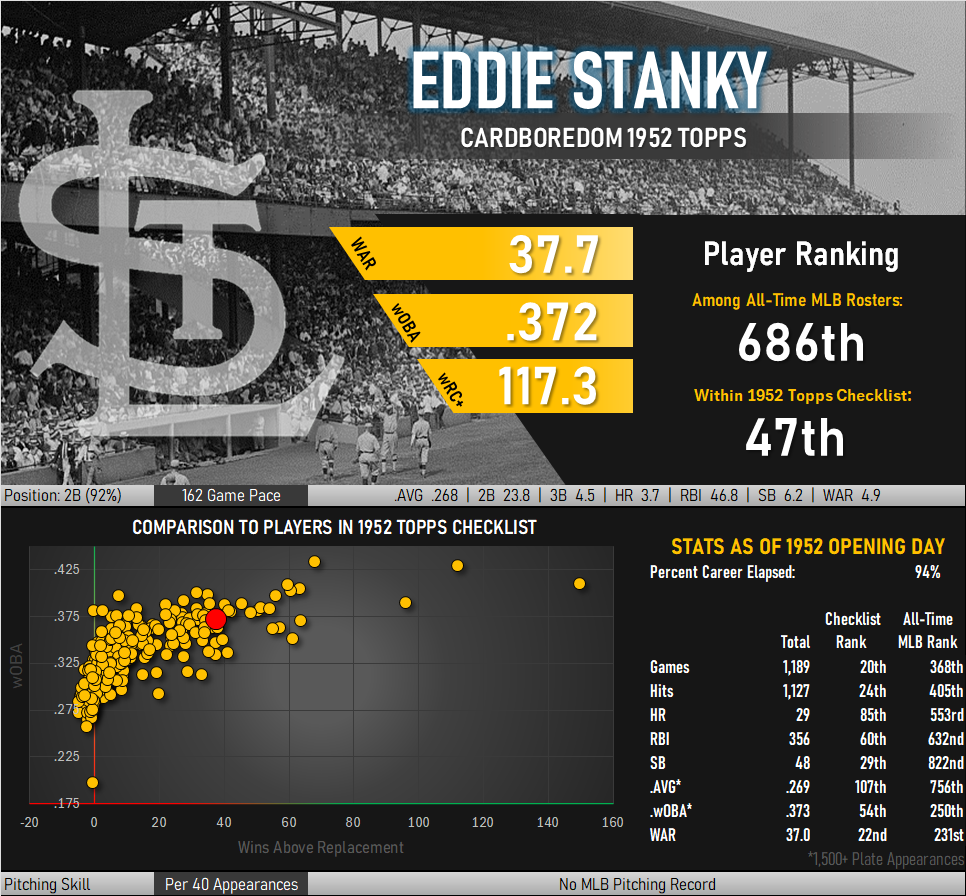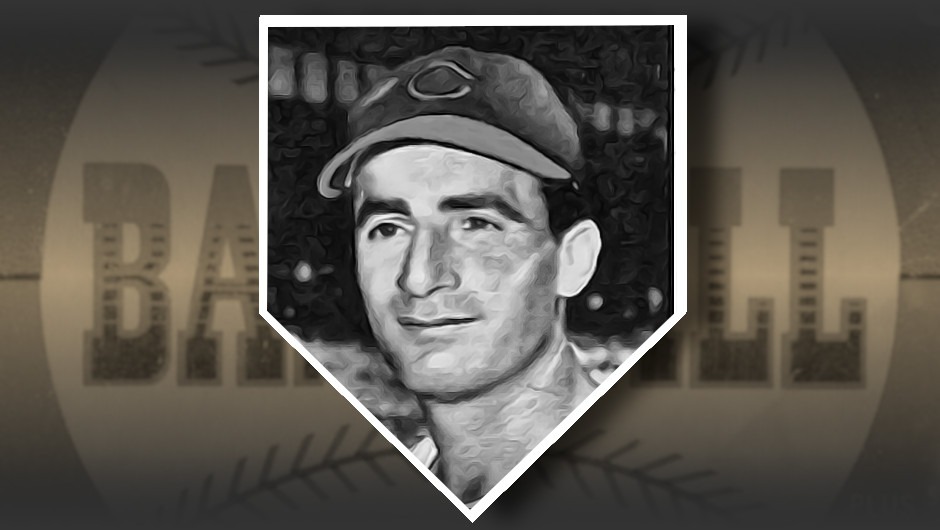Eddie Stanky appears in the first series of Topps’ 1952 baseball card checklist and would have quickly become a lightning rod for controversy among baseball fans discovering his card in packs of gum. A few stories give a quick glimpse into what collectors were dealing with.
The 1951 World Series saw Eddie Stanky try to steal second base against the Yankees in a 1-0 game. The ball was quickly fired to Phil Rizzuto, who was covering second base on the play and had Stanky out by at least 15 feet. Stanky dutifully went into a slide, but purposely aimed a precision kick to the ball in Rizzuto’s glove. The ball caromed into the outfield and Stanky, who averaged only a half dozen steals per season, grabbed two bases on what seemed to be a suicide mission. He subsequently scored to make the game 2-0 when Al Dark followed up with a single.
Even the prelude to such chaos could be exciting. In a somewhat typical scene five years earlier, Stanky checked off a full bingo card of trouble inside a single plate appearance against the Cubs’ Claude Passeau. The count was worked to 2-2 as Chicago’s dugout made a team effort of lobbing insults at the player already known as “The Brat.” Stanky sent the Chicago bench scattering for safety when he lined a foul ball right into the middle of the jeers. The next pitch was thrown at his head, sending him to the dust. He fouled another pitch harmlessly into the stands before finally drawing a walk from the irate pitcher and a stream of four-letter epithets from catcher Clyde McCullough. Stanky held his head high and tossed his bat behind him as he jogged to first base. The bat, meanwhile, landed directly on McCullough’s toes. The catcher yelped and kicked the bat away. It sailed directly towards Passaeu, who was sent diving off the mound to avoid the missile.
Even umpires were not immune from Stanky’s infectious discord, as evidenced by his being ejected from more than 10% of all his minor league appearances. He was once called out on strikes by plate umpire George Magerkurth in another 1946 contest. Walking back to the bench, Stanky took the odd path of shouldering his way between the closely positioned umpire and catcher, all the while muttering about the quality of the third strike call. The 6’3″ Magerkurth physically lifted up the smaller Stanky, carried him closer to the dugout, and ceremoniously ejected him from the game. Brooklyn manager Leo Durocher spent the next ten minutes arguing with Magerkurth before that interaction too became physical. Over the next four innings another 11 Dodgers would be ejected, leaving Brooklyn to play with just 9 men on the field, a pair of backups in the bullpen, and a coaching duo to watch the basepaths.
I have yet to find a reference to Stanky being a good athlete, though there is no doubt that he helped his team win ballgames. Time began a 1952 profile of Stanky by describing him as “the canniest lead-off batter in baseball’s history.” He created havoc equally on the basepaths and in the batter’s box, holding the National League record for highest career walk (14.8%) rate until the arrival of Barry Bonds.

Throwing opposing teams off balance and drawing so many walks paid off. Stanky’s pace of 4.9 wins above replacement per 162 games is on par with Yogi Berra. Amazingly, this .268 hitter who averaged 3.7 HRs and 6.2 SBs per 162 games was more productive in terms of WAR than Duke Snider, Albert Pujols, and Ken Griffey, Jr.
Another Card Show Find
Eddie Stanky was crossed off the needs of my ’52 Topps set building project at the same time as my Johnny Berardino card. The pair were sitting in a bin filled with vintage commons, though I really think both players have a bit more notoriety than your typical run-of-the-mill name on the checklist.
Stanky is actually one of the numerous manager cards spread throughout the set. Like several others in a player/manager role, the position listed on the card reflects only his on-field duties with the team. Unlike the others, Stanky’s card leads off the expanded biographical text by announcing he has just been named to the role of Manager with the Cardinals.










